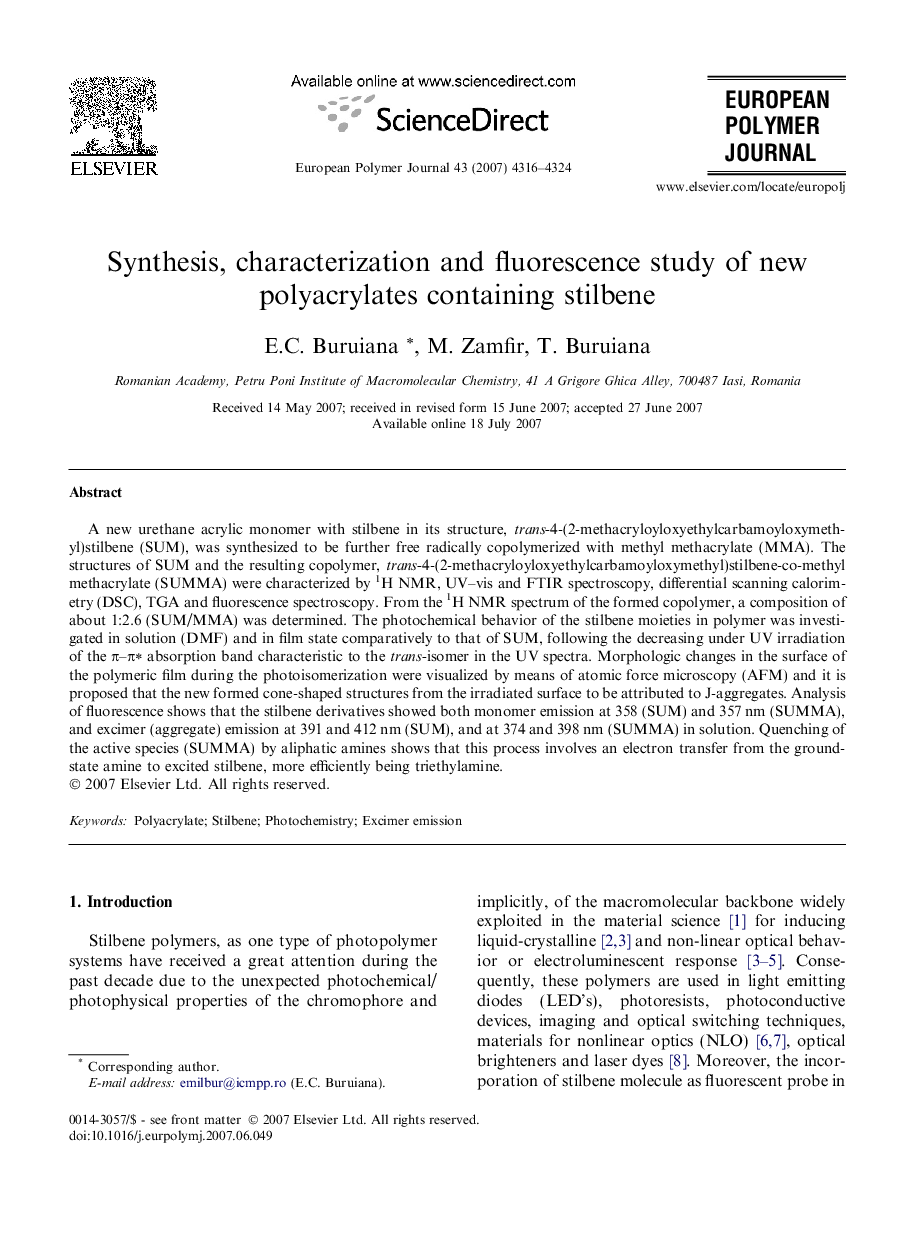| Article ID | Journal | Published Year | Pages | File Type |
|---|---|---|---|---|
| 1403406 | European Polymer Journal | 2007 | 9 Pages |
A new urethane acrylic monomer with stilbene in its structure, trans-4-(2-methacryloyloxyethylcarbamoyloxymethyl)stilbene (SUM), was synthesized to be further free radically copolymerized with methyl methacrylate (MMA). The structures of SUM and the resulting copolymer, trans-4-(2-methacryloyloxyethylcarbamoyloxymethyl)stilbene-co-methyl methacrylate (SUMMA) were characterized by 1H NMR, UV–vis and FTIR spectroscopy, differential scanning calorimetry (DSC), TGA and fluorescence spectroscopy. From the 1H NMR spectrum of the formed copolymer, a composition of about 1:2.6 (SUM/MMA) was determined. The photochemical behavior of the stilbene moieties in polymer was investigated in solution (DMF) and in film state comparatively to that of SUM, following the decreasing under UV irradiation of the π–π∗ absorption band characteristic to the trans-isomer in the UV spectra. Morphologic changes in the surface of the polymeric film during the photoisomerization were visualized by means of atomic force microscopy (AFM) and it is proposed that the new formed cone-shaped structures from the irradiated surface to be attributed to J-aggregates. Analysis of fluorescence shows that the stilbene derivatives showed both monomer emission at 358 (SUM) and 357 nm (SUMMA), and excimer (aggregate) emission at 391 and 412 nm (SUM), and at 374 and 398 nm (SUMMA) in solution. Quenching of the active species (SUMMA) by aliphatic amines shows that this process involves an electron transfer from the ground-state amine to excited stilbene, more efficiently being triethylamine.
